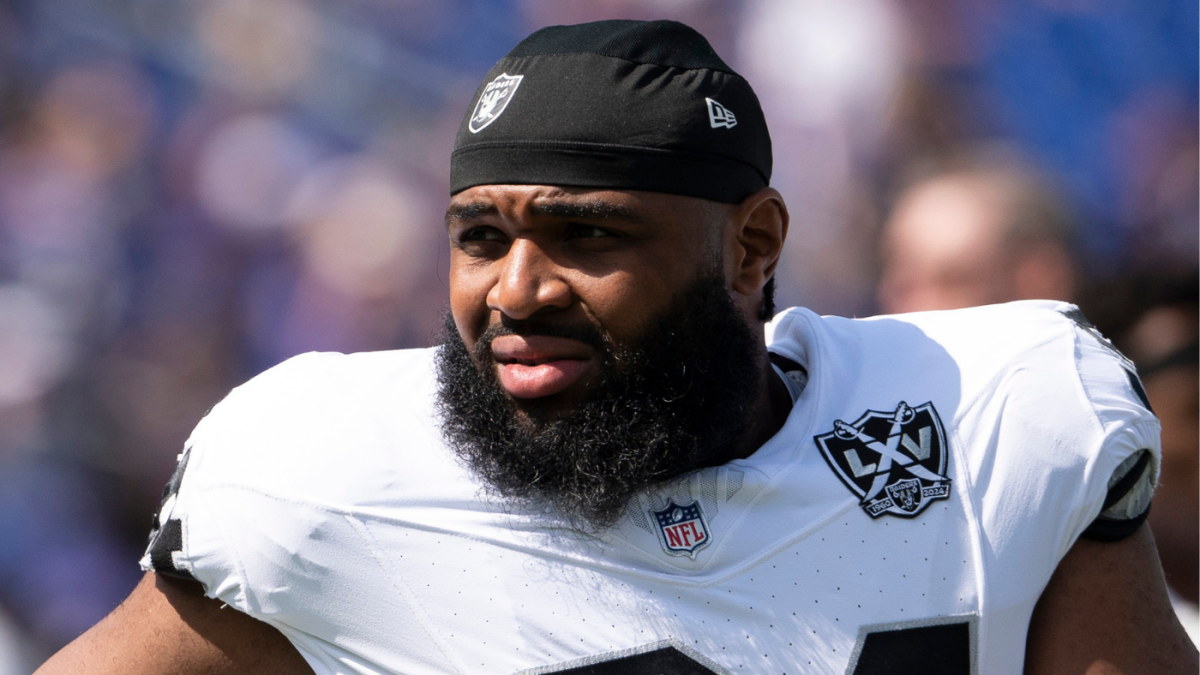The Shocking Divorce: Analyzing the Raiders’ Release of Christian Wilkins
Introduction: A Stunning Turn of Events
The NFL landscape was rocked when the Las Vegas Raiders abruptly released defensive tackle Christian Wilkins, just one year after signing him to a lucrative four-year, $110 million contract. This unexpected move, which voided $35.2 million in guaranteed money, has sparked intense debate, legal disputes, and speculation about the future of both the player and the team. The decision highlights the complexities of high-stakes contracts, injury management, and the delicate balance between player autonomy and team control.
A High-Profile Acquisition Gone Sour
The Promise of a Star Player
When the Raiders acquired Christian Wilkins in 2024, the move was met with widespread approval. Wilkins, a standout defensive tackle with the Miami Dolphins, was seen as a transformative addition to the Raiders’ defense. His reputation for durability, consistency, and disruptive play made him an ideal candidate to anchor Las Vegas’ defensive line. The $110 million contract, with over $82 million guaranteed, reflected the team’s confidence in his ability to elevate their performance.
The Injury That Changed Everything
However, Wilkins’ tenure with the Raiders took a dramatic turn after just five games in the 2024 season. A Jones fracture in his foot sidelined him for the remainder of the year, raising concerns about his recovery and future contributions. The injury itself was not unprecedented, but the subsequent disagreements over his rehabilitation approach became the focal point of the conflict.
The Foot Injury and the Rehab Dispute
Diverging Opinions on Recovery
The core of the dispute revolves around the Raiders’ insistence on surgical intervention for Wilkins’ foot injury, while Wilkins reportedly preferred a non-surgical rehabilitation plan. This divergence in medical and personal opinions escalated into a full-blown conflict, with the Raiders ultimately losing faith in Wilkins’ commitment to the team’s prescribed recovery process.
The Termination and Its Implications
By releasing Wilkins with the designation of a “terminated vested veteran,” the Raiders voided the remaining guaranteed money on his contract. This move was not only financially significant but also sent a strong message about the team’s expectations for player accountability. The decision underscores the high stakes involved in managing high-profile contracts and the potential consequences of failing to meet team standards.
Financial Implications and the NFLPA Grievance
The Financial Fallout
The Raiders’ decision to release Wilkins comes with substantial financial repercussions. While the exact details are complex, the team is absorbing a significant cap hit, effectively forfeiting a large portion of their investment in Wilkins. This move raises questions about the long-term financial strategy of the Raiders and the risks associated with high-dollar contracts.
The Legal Battle Ahead
Wilkins and the NFL Players Association (NFLPA) have filed a grievance against the Raiders, arguing that the team’s actions were unjustified and violated the collective bargaining agreement. This legal battle could set a precedent for future disputes involving player injuries and contract terms. The outcome will be closely watched by players, teams, and agents, as it could influence how similar situations are handled in the future.
The Raiders’ Perspective: A Shift in Philosophy?
A New Emphasis on Accountability
The Raiders’ decision to release Wilkins suggests a potential shift in their team-building philosophy. The move indicates a willingness to prioritize player accountability and team culture over financial commitments. This approach could be influenced by coach Pete Carroll, known for his emphasis on team cohesion and player buy-in.
The Risks of a Bold Move
However, the decision also carries significant risks. By cutting ties with a talented player, the Raiders have created a void on their defensive line and may have damaged their reputation among free agents. Players may now view the team as unpredictable, potentially deterring future signings. The long-term impact of this move on the Raiders’ roster and brand remains to be seen.
Wilkins’ Future: A Return to Miami?
A Proven Talent in the Market
Despite the injury concerns and ongoing legal dispute, Christian Wilkins remains a highly desirable free agent. His track record of success with the Miami Dolphins and his relatively young age (29) make him an attractive option for teams in need of defensive line help. The specific terms of his next contract will likely depend on the resolution of his grievance with the Raiders and his recovery progress.
Potential Landing Spots
A return to the Miami Dolphins is a plausible scenario for Wilkins. His familiarity with the team, coaching staff, and fan base could provide a smooth transition back to the field. Other teams with defensive line needs and sufficient cap space may also express interest. The outcome of the legal battle will play a crucial role in determining his market value and future opportunities.
Conclusion: A Costly Lesson and an Uncertain Future
The Raiders’ release of Christian Wilkins serves as a stark reminder of the complexities and risks inherent in high-stakes NFL contracts. What began as a promising acquisition quickly unraveled due to injury and conflicting approaches to rehabilitation. The fallout from this decision will have lasting implications for both the Raiders and the broader NFL landscape.
For the Raiders, the move reflects a willingness to prioritize team culture and accountability, even at a significant financial cost. However, the long-term impact on their roster and reputation remains uncertain. For Wilkins, the path forward involves navigating a legal battle and proving his readiness to return to the field. His future success will depend on his ability to overcome the injury and secure a new team that values his talents.
Ultimately, the Christian Wilkins saga highlights the delicate balance between player autonomy and team control, as well as the importance of clear communication and mutual understanding in high-pressure environments. The lessons learned from this “shocking divorce” will resonate throughout the NFL, influencing contract negotiations and shaping the dynamics between players and teams for years to come.












